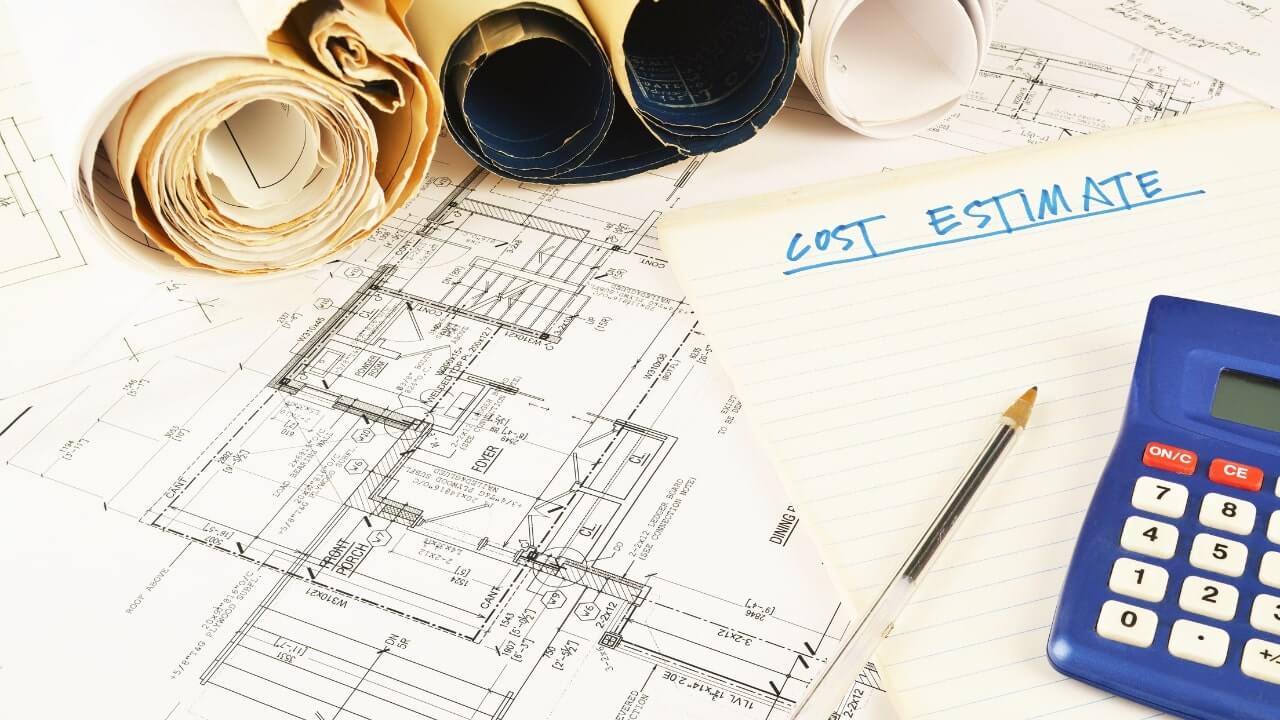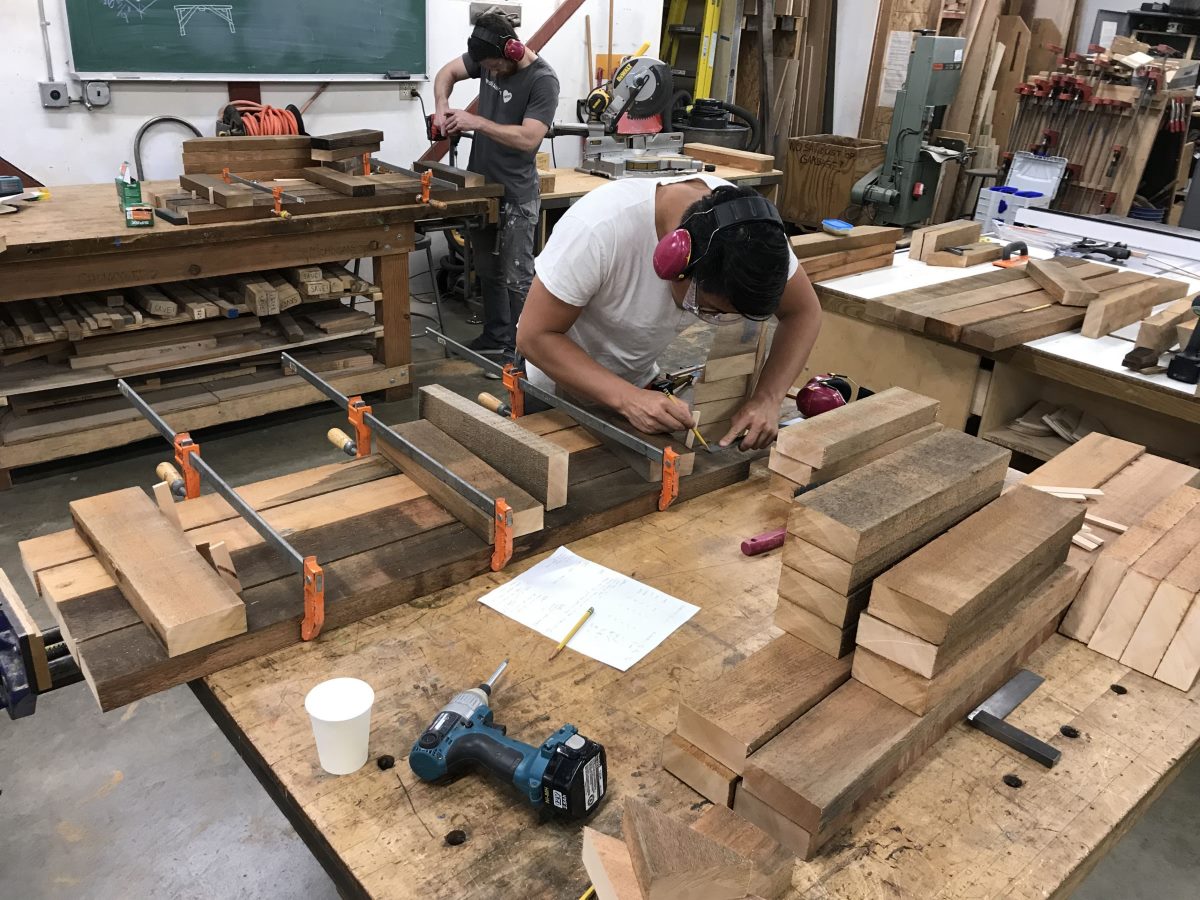Home>Home Maintenance>How To Bid On Home Repair Jobs


Home Maintenance
How To Bid On Home Repair Jobs
Modified: December 12, 2023
Learn how to bid on home repair jobs and win more contracts with our expert tips and strategies for home maintenance professionals. Discover the best practices for submitting winning bids.
(Many of the links in this article redirect to a specific reviewed product. Your purchase of these products through affiliate links helps to generate commission for Storables.com, at no extra cost. Learn more)
Introduction
Welcome to the world of home repair bidding! As a contractor or handyman, the process of bidding on home repair jobs is a crucial aspect of your business. Successfully winning bids can lead to consistent work and a strong reputation in your community. However, the bidding process can be complex and competitive, requiring a blend of industry knowledge, strategic planning, and effective communication.
In this comprehensive guide, we will explore the essential steps to effectively bid on home repair jobs. From initial research and preparation to the art of crafting a winning bid, we will delve into the intricacies of the bidding process, equipping you with the knowledge and strategies to stand out in a crowded marketplace.
Whether you are a seasoned professional or just starting in the home repair industry, mastering the art of bidding can elevate your business to new heights. So, let's roll up our sleeves and dive into the world of home repair bidding, where each bid is an opportunity to showcase your expertise and secure valuable projects.
Key Takeaways:
- Mastering the art of bidding on home repair jobs involves thorough research, accurate cost estimation, and crafting compelling bids to showcase expertise and reliability.
- Submitting bids with professionalism, timely communication, and a client-focused approach can leave a lasting impression and foster successful working relationships.
Read more: How To Bid A Siding Job
Researching and Preparing for Bidding
Before diving into the bidding process, it’s essential to conduct thorough research and meticulous preparation. This phase lays the foundation for a successful bid and sets the stage for effectively showcasing your expertise and reliability.
Understanding the Project Requirements: The first step in preparing for a bid is to fully comprehend the scope of the home repair project. This involves carefully reviewing the project specifications, blueprints, and any other relevant documentation provided by the client. By gaining a comprehensive understanding of the project requirements, you can accurately assess the resources, time, and expertise needed to complete the job.
Site Visit and Assessment: Whenever possible, conducting a site visit is invaluable. This allows you to assess the current state of the property, identify potential challenges, and gain a deeper understanding of the client’s needs. Moreover, it provides an opportunity to engage with the client directly, building rapport and demonstrating your commitment to delivering exceptional service.
Market Analysis: Researching the local market and analyzing similar home repair projects can provide valuable insights. Understanding the prevailing rates for labor, materials, and overhead costs in your area enables you to formulate competitive yet profitable bids. Additionally, identifying the unique selling points of your services compared to competitors can give you a strategic advantage.
Building Relationships: Establishing connections with suppliers, subcontractors, and industry professionals can enhance your bidding process. Reliable partners and a robust network can contribute to competitive pricing, access to high-quality materials, and streamlined project management.
Legal and Regulatory Compliance: Familiarizing yourself with local building codes, permits, and industry regulations is paramount. Ensuring that your bids align with legal requirements and industry standards not only demonstrates professionalism but also mitigates potential risks during project execution.
By meticulously researching and preparing for bidding, you lay a solid groundwork for crafting informed and competitive bids. This proactive approach not only enhances your chances of winning projects but also reflects your commitment to delivering exceptional results.
Calculating Costs
Accurately calculating costs is a critical aspect of the bidding process, as it directly impacts your profitability and the competitiveness of your bids. From material expenses to labor costs, meticulous cost estimation is essential for crafting compelling and realistic bids that align with both your financial goals and the client’s budget.
Material Costs: Begin by itemizing the materials required for the home repair project. Researching and obtaining quotes from reputable suppliers can help you determine the most cost-effective yet high-quality materials. It’s crucial to account for potential price fluctuations and ensure that the chosen materials meet the project’s specifications and the client’s expectations.
Labor Expenses: Calculating labor costs involves assessing the time and expertise required to complete the project. Consider factors such as the skill level of your team, labor market rates, and any specialized labor needs. Additionally, factoring in overhead costs, such as insurance, benefits, and equipment maintenance, is essential for accurately estimating labor expenses.
Equipment and Tool Costs: If specialized equipment or tools are necessary for the project, accounting for their rental or purchase costs is crucial. Whether it’s heavy machinery, power tools, or safety gear, incorporating these expenses into your bid ensures that all operational costs are accounted for, preventing any unforeseen financial burdens.
Indirect Costs: Beyond direct project expenses, indirect costs, including administrative overhead, permits, and utilities, should be factored into your bid. These costs contribute to the overall financial health of your business and play a pivotal role in determining the profitability of the project.
Contingency Planning: Integrating a contingency allowance into your cost calculations is prudent. Unforeseen circumstances, such as material shortages, weather delays, or unexpected repairs, can impact project timelines and costs. Including a contingency factor demonstrates foresight and financial prudence, instilling confidence in your ability to navigate unforeseen challenges.
By meticulously evaluating and calculating costs, you position yourself to create bids that are not only competitive but also reflective of your commitment to transparency and delivering value. Accurate cost estimation forms the backbone of a well-crafted bid, setting the stage for a successful and mutually beneficial partnership with your clients.
When bidding on home repair jobs, make sure to thoroughly assess the scope of work, factor in materials and labor costs, and consider any potential unforeseen issues that may arise. It’s important to provide a detailed and accurate estimate to ensure a successful bid.
Writing a Winning Bid
Crafting a winning bid is an art that combines precision, persuasion, and professionalism. A well-written bid not only communicates your expertise and commitment but also distinguishes your proposal from competitors, increasing the likelihood of securing the home repair project. Here are key elements to consider when composing a compelling bid:
Clear and Detailed Scope of Work: Begin by outlining a comprehensive scope of work that aligns with the project requirements. Clearly delineate the tasks, timelines, and deliverables, providing the client with a transparent understanding of the proposed project plan. Detailing the specific services you will provide demonstrates your attention to detail and commitment to meeting the client’s needs.
Value Proposition: Articulate the unique value your services bring to the table. Whether it’s your expertise in a particular repair technique, a commitment to using eco-friendly materials, or a track record of delivering projects ahead of schedule, highlighting your value proposition sets your bid apart and resonates with the client’s objectives.
Transparent Pricing: Presenting a clear and itemized breakdown of costs instills confidence in your transparency and professionalism. Clearly delineate material costs, labor expenses, and any additional charges, ensuring that the client understands the financial components of the bid. Transparent pricing fosters trust and minimizes the likelihood of misunderstandings down the line.
Compelling Narrative: Beyond the technical details, infuse your bid with a compelling narrative that conveys your passion for the project and your commitment to exceptional craftsmanship. Share success stories, testimonials, or case studies that showcase your ability to overcome challenges and deliver outstanding results. A well-crafted narrative resonates with clients on a personal level, fostering a sense of trust and confidence in your capabilities.
Professional Presentation: Pay attention to the visual presentation of your bid. Utilize professional formatting, clear typography, and high-quality visuals to create a polished and visually appealing document. A professionally presented bid reflects your commitment to excellence and attention to detail, leaving a lasting impression on the client.
Client-Centric Approach: Tailor your bid to address the client’s specific needs and pain points. Demonstrating a deep understanding of the client’s objectives and customizing your proposal accordingly showcases your dedication to delivering a solution that aligns with their vision and goals.
By weaving these elements into your bid, you can create a persuasive and impactful proposal that resonates with clients and positions you as the ideal partner for their home repair project. A winning bid not only communicates your capabilities but also sets the stage for a collaborative and successful working relationship.
Submitting the Bid
After investing time and effort into crafting a compelling bid, the process of submitting it demands strategic planning and attention to detail. The submission phase is your opportunity to leave a lasting impression and convey professionalism, responsiveness, and a genuine commitment to the client’s project. Here are key considerations when submitting your bid:
Timely Submission: Adhering to the specified deadline is paramount. Submitting your bid in a timely manner demonstrates reliability and respect for the client’s time. It also reflects your ability to manage deadlines, a quality that clients value in potential partners.
Professional Communication: Accompany your bid with a well-crafted cover letter that conveys your enthusiasm for the project and your appreciation of the opportunity. The cover letter serves as a personal touchpoint, allowing you to express gratitude for the client’s consideration and reiterate your commitment to delivering exceptional results.
Clarity in Delivery: Whether submitting the bid electronically or in hard copy, ensure that the delivery method is clear and aligns with the client’s preferences. If submitting electronically, confirm receipt with the client to provide peace of mind and demonstrate your proactive approach to communication.
Accessibility and Follow-Up: Make yourself available to address any questions or clarifications the client may have after receiving the bid. Providing clear contact information and expressing openness to further discussions underscores your dedication to open communication and client satisfaction.
Confidentiality and Professionalism: Respect the confidentiality of the bidding process and refrain from discussing specifics of your bid with competitors or unauthorized individuals. Upholding professionalism and discretion throughout the submission phase reinforces your integrity and ethical standards.
Post-Submission Engagement: Following the bid submission, consider engaging with the client in a non-intrusive manner. A brief follow-up message expressing gratitude for the opportunity to bid and reaffirming your availability for discussions can serve as a gentle reminder of your interest in the project.
By approaching the bid submission phase with professionalism, responsiveness, and a client-centric mindset, you can leave a positive and lasting impression. Your submission should not only showcase the quality of your bid but also reflect your commitment to building a mutually beneficial partnership with the client.
Read more: How To Bid Plumbing Jobs
Conclusion
The process of bidding on home repair jobs is a multifaceted endeavor that demands a blend of industry expertise, strategic planning, and effective communication. From meticulous research and preparation to the art of crafting a compelling bid and submitting it with professionalism, each step plays a pivotal role in securing valuable projects and fostering enduring client relationships.
As a contractor or handyman, the bidding process represents an opportunity to showcase your skills, reliability, and commitment to delivering exceptional results. By understanding the project requirements, conducting thorough market analysis, and building strong relationships within the industry, you lay a solid foundation for crafting informed and competitive bids.
Accurate cost estimation forms the backbone of a well-crafted bid, allowing you to present transparent pricing and demonstrate your financial prudence. By meticulously evaluating material costs, labor expenses, and indirect costs, you position yourself to create bids that reflect your commitment to delivering value and exceptional service.
Crafting a winning bid requires precision, persuasion, and a client-centric approach. By outlining a clear scope of work, articulating your value proposition, and infusing your bid with a compelling narrative, you can differentiate your proposal from competitors and resonate with the client’s vision and objectives.
Submitting the bid is your opportunity to leave a lasting impression of professionalism and responsiveness. By adhering to deadlines, communicating with clarity, and engaging with the client in a respectful and proactive manner, you demonstrate your reliability and dedication to fostering a successful working relationship.
In conclusion, mastering the art of bidding on home repair jobs is a journey that encompasses industry knowledge, meticulous planning, and a client-focused mindset. Each bid represents an opportunity to not only secure projects but also to build trust, showcase your expertise, and contribute to the enhancement of homes and communities. By approaching the bidding process with professionalism, transparency, and a genuine commitment to delivering excellence, you position yourself to thrive in a competitive marketplace and establish a reputation as a trusted and sought-after home repair professional.
Frequently Asked Questions about How To Bid On Home Repair Jobs
Was this page helpful?
At Storables.com, we guarantee accurate and reliable information. Our content, validated by Expert Board Contributors, is crafted following stringent Editorial Policies. We're committed to providing you with well-researched, expert-backed insights for all your informational needs.














